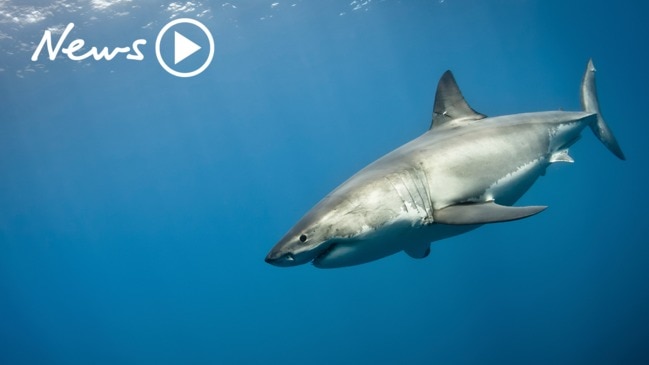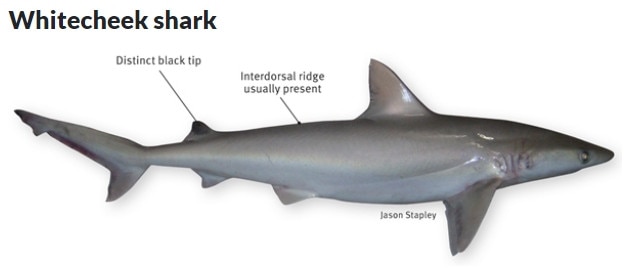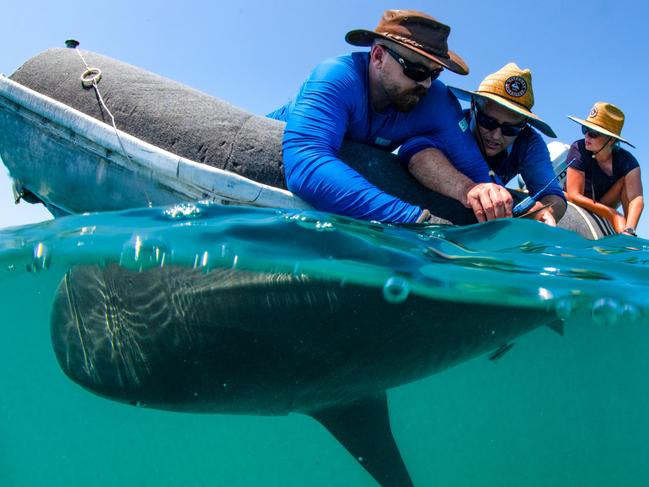Researchers say blackspot sharks behind Whitsundays attacks
Researchers believe they have identified the type of shark responsible for three attacks – one fatal – that rocked the popular tourist playground of the Whitsundays and say it’s not your usual suspects.

QLD News
Don't miss out on the headlines from QLD News. Followed categories will be added to My News.
SHARK experts believe they have unmasked the culprits behind a spate of attacks off the Queensland coast.
Tiger and bull sharks were blamed for three attacks – one fatal – late last year in the popular tourist playground of the Whitsundays.
But The Courier-Mail has been told by sources close to the investigation into the attack that findings suggest the prime suspects may actually have been the notoriously skittish and timid blackspot shark.
Whitsunday Islands shark attacks could be avoided with new shark-repelling technology
Whitsundays tourism asked for drumlines to be removed from shark attack hotspot
Whitsundays charter operator’s plan to stop shark attacks
Crisis talks to be held over horror Whitsundays shark attacks
Shark attacks in the Whitsundays: Divided lines in debate on predators v people
The wide-mouth blackspot shark, also known as a whitecheek whaler, only grows a little over 1m, is not renowned as a man-eater and is believed to pose almost no risk to humans except in a feeding frenzy.

State Government officials are yet to publicly detail any analysis of the size and type of the bites on the victims.
But preliminary views indicated the bite marks were too small for the bigger, more aggressive species like tiger, bull or great white sharks.
Hannah Papps, 12, and Justine Barwick, 46, survived near-fatal attacks while swimming at dusk a day apart off yachts moored in Cid Harbour in September last year.
Both nearly bled to death from leg wounds but were saved in incredible rescues.
Hannah later had her leg amputated.


Melbourne doctor Daniel Christidis, 33, was killed after he was mauled while paddle boarding with friends off a yacht at the same location six weeks later on November 5.
Mr Christidis sustained lethal bites to his legs and arms and, despite the heroic efforts of his medical friends at the scene, died on the RACQ CQ Rescue helicopter flight to Mackay Base Hospital.
His death will go to a coronial inquest.
It marked 26 fatal shark attacks in Australia between 2007 and 2018 and an interim report into the three attacks linked them to the now banned practice of boaties intentionally attracting sharks by throwing food scraps overboard in Cid Harbour.
Leading shark scientist Professor Mike Bennett, of the University of Queensland, said he was one of two experts tasked with identifying the sharks involved in one attack but was unable to comment.
“The matter is with authorities,” Prof Bennett said.

Researchers, in a joint state and federal-funded $500,000 tagging program launched in response to the attacks, have just completed the second stage of a study into the prevalence and behaviour of sharks in the Whitsundays.
“The Whitsundays has always been a big black hole in shark data,’’ marine biologist Dr Richard Fitzpatrick, of Biopixel, said. “We are now getting some amazing insights into how far animals do range and their behaviour.”
Using satellite tags funded by tech baron Bevan Slattery, the movements of tagged tiger, bull and hammerhead sharks can now be tracked live on the Reef Tracks website run by Citizens of the Great Barrier Reef.
One bull shark, named Bevan in honour of Mr Slattery, was tagged in Cid Harbour on June 12 and travelled 1029km in 18 days to Cape York.
Three other tagged tiger sharks have been named after swim star Shayna Jack, Qantas boss Alan Joyce and TV presenter Laura Wells.

Researchers also found the shark population and prevalence in the Whitsundays was much lower than elsewhere.
“Overall, results show the number of sharks using Cid Harbour at the time of sampling was low,” an interim report reads.
Data shows blackspot sharks and spot-tailed sharks were among the most common species of shark in the Whitsundays region, leading to their identification as prime suspects in the Cid Harbour attacks.
Scientists are due to deliver the final report of the shark research project by December.
Cid Harbour, a popular mooring site for up to 100 yachts a night, is still listed as a “Do-Not-Swim” zone.
WHAT IS THE BLACKSPOT SHARK?
■ A small species of shark most commonly found in the tropical Indo-West Pacific Ocean
■ Generally grows to less than 1m in length
■ Is not usually considered dangerous to humans
■ Mainly feeds on fish, crustaceans, and squid


